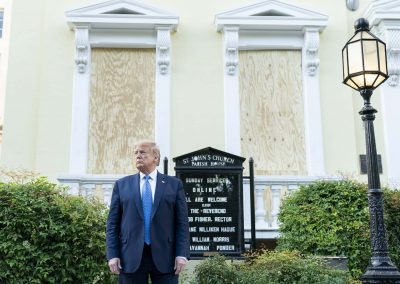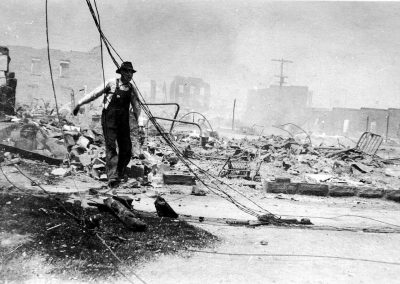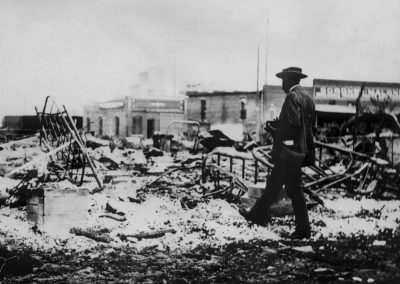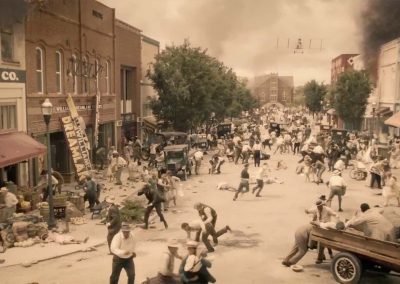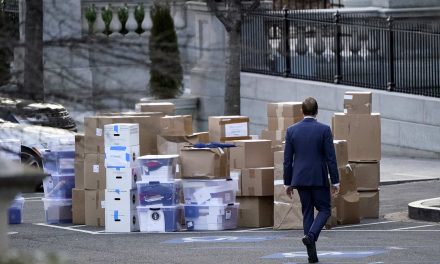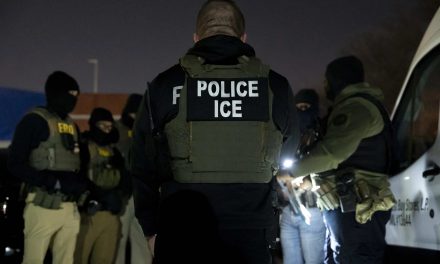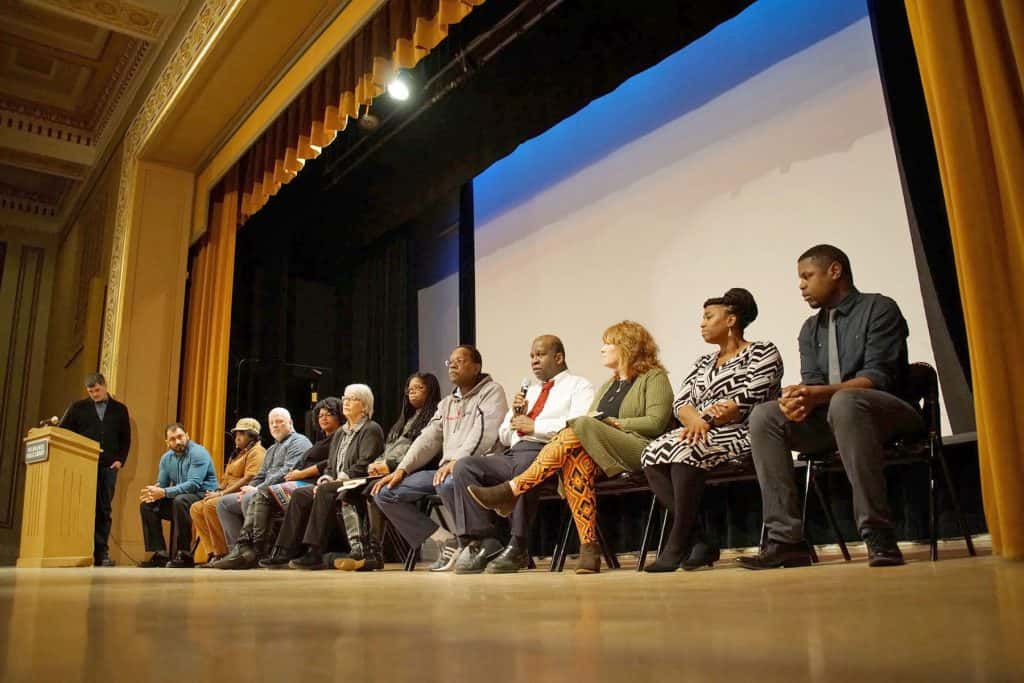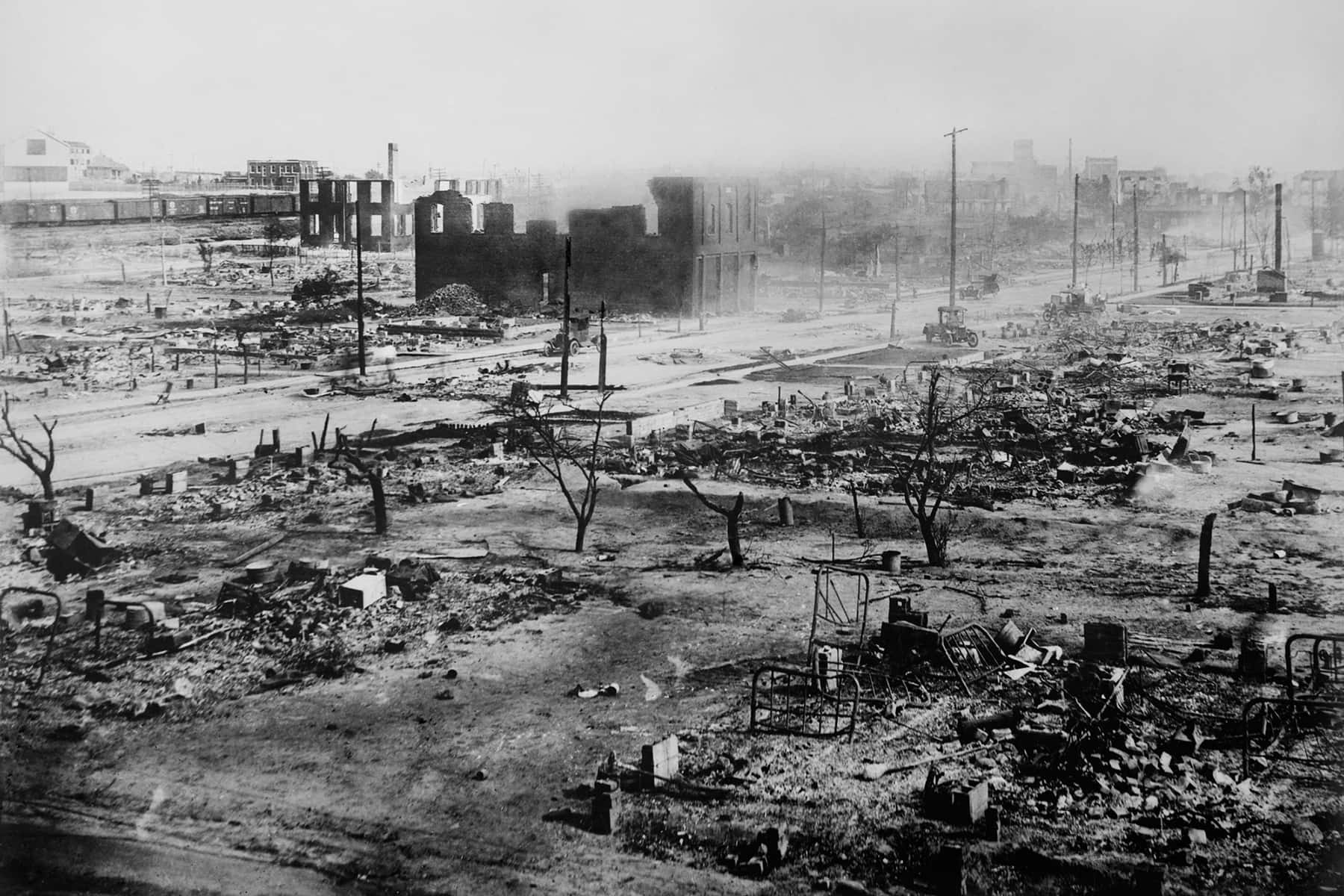
“I believe in states’ rights.” – Ronald Reagan, at Neshoba County Fairgrounds on August 3, 1980
“These Monumental and very Powerful Bases have become part of a Great American Heritage, and a … history of Winning, Victory, and Freedom.” – Donald Trump, tweeting about his refusal to rename military bases named after Confederate leaders on June 10, 2020
At a time when people across the world have joined in a rallying cry for black lives in the United States, Donald Trump announces he will restart his campaign rallies in Tulsa, Oklahoma, the scene of a race massacre in 1921. The date he picked is on Juneteenth, the date celebrated by blacks as the end of slavery. I cannot excuse this as being anything other than an intentional message to his base and a slap in the face to blacks analogous to Ronald Reagan launching his presidential campaign in Neshoba County, Mississippi in 1980 in the place where three civil rights workers were murdered in 1964.
Most Americans are unfamiliar with the history of what happened ninety-nine years ago in May and June 1921 in Tulsa. The “Greenwood” section of Tulsa was a thriving black business district and the second largest black neighborhood in the state of Oklahoma. Booker T. Washington and others called Greenwood “Black Wall Street” because of the large number of black owned businesses including, the largest black-owned hotel in the country.
Most whites in town resented the Black community’s prosperity. “That’s what leads to Greenwood being called the Black Wall Street. It had restaurants and furriers and jewelry stores and hotels,” John W. Franklin explains, “and the white mobs looted the homes and businesses before they set fire to the community. For years black women would see white women walking down the street in their jewelry and snatch it off.”
Nearly ten thousand blacks called Greenwood home on May 30, 1921 when a black man named Dick Rowland tripped and accidentally stepped on a white woman’s foot on an elevator in a downtown hotel. Police picked up Rowland after the woman, Sarah Page, screamed and Rowland fled on foot. Rowland was arrested and charged with assault but the charges were quickly dropped. The local newspaper the Tulsa Tribune falsely claimed the following day that Rowland attempted to rape Page. Witnesses report that the paper published an op-ed titled “To Lynch Negro Tonight.”
Later that night a group of about 800 white men gathered outside the courthouse demanding the sheriff release Rowland into “their custody.” He refused to do so. When word spread in Greenwood that a lynch mob had gathered by the jail, a small group of black men, many of them WWI veterans, offered to protect Rowland from the mob. Blacks in Greenwood were heard saying, “We can’t let this happen here.”
The mob that night grew to over two thousand as many whites returned home to retrieve their guns. Men, women, and children from the white community helped the mob swell in size as they gathered and began to block off streets near the courthouse. The mob unsuccessfully attempted to break into the local armory to get more weapons. A larger group of armed black men returned to the courthouse to try and prevent the lynching of Rowland. The sheriff turned them away. A white man grabbed one of the black men, a tall WWI veteran, attempting to disarm him; a shot was fired and the massacre soon began.
After the initial shot was fired, probably accidentally, the white mob and law enforcement officers opened fire on the black men. Within a few short seconds, over twenty people, both blacks and whites, lay dead or wounded in the street. Outnumbered by twenty-to-one, the black men fled for safety back to Greenwood. White mob members pursued them, firing volleys along the way. Later that night a group of whites returned to the courthouse yelling, “Bring the rope!” And “get the nigger!”
An unnamed black man was murdered on the stage of the Royal Theater downtown by the heavily armed white mob after a short foot chase. Carloads of armed whites began making “drive-by” shootings in the residential part of Greenwood. One of the most notorious stories tells of the murder of an elderly black couple. White mobsters broke into their home and while they begged for their lives and knelt in prayer they were both shot in the back of the head.
By the time the clock struck midnight, whites were busy setting fires around the outer edges of Greenwood. Gun wielding mob members drove off firefighters trying to douse the flames. Tulsa police responded to the growing unrest by deputizing 500 members of the lynch mob including white boys and men swearing them in as “Special Deputies.” One eyewitness, Laurel G. Buck, said instructions were given to them to “get a gun and get a nigger.” White mobsters broke into pawnshops and hardware stores downtown, stealing weapons and ammunition. Any black people unlucky enough to be in the downtown area, were gunned down by whites. A white man mistaken for being black was shot and killed by the mob.
As blacks tried desperately to defend their homes and businesses, the National Guard unit in town was mobilized to protect the white neighborhood from what they anticipated would be an attack by blacks. They rounded up blacks and handed them over to the police. Authorities armed whites, providing them with firearms and ammunition. In the hours just before dawn the white mob had grown to perhaps ten thousand.
They descended on Greenwood after being divided into three main groups, carrying torches, and began to systematically loot black homes, churches and businesses before setting them on fire. One small group approaching Greenwood was told, “What the hell are you waitin’ on? Let’s go get ‘em.” Along the way, blacks valiantly fighting back were beaten with clubs, fists, pistols and rifles. At dawn a whistle was sounded for the formal attack to begin in earnest.
A dozen churches, five hotels, 31 restaurants, four drug stores, eight doctor’s offices, and more than two dozen grocery stores as well as the black public library were burned to the ground. A well-respected black surgeon, Dr. A.C. Jackson, surrendered to the mob shouting, “Here I am, I want to go with you,” holding his hands above his head and was summarily executed on the spot.
As depicted in the HBO miniseries “The Watchmen,” based on the celebrated graphic novel by Alan Moore and Dave Gibbons, white Oklahomans used machine guns, fired on blacks from the air and dropped incendiary devices and explosives from at least six airplanes. Whites forced blacks out of their homes and shot anyone who resisted as well as any black men found with guns in their homes. Blacks set up a defensive position in Mount Zion Baptist Church but were driven out by machine gun fire and the church was torched by the mob.
Eyewitnesses later reported that white men in World War I army uniforms and uniformed police officers set fires in Greenwood. Thirty-five square blocks of Greenwood was completely destroyed during the evening of May 31, through the afternoon of June 1. The mob left the 10,000 black residents homeless by burning nearly 1,300 homes. They destroyed everything of value in Greenwood including churches, businesses, schools, even a hospital and library, and the aforementioned black hotel. Massacre survivor W.D. Williams said blacks defended their community for a while, “but then the airplanes came dropping bombs.” Blacks fleeing town were killed by the mob.
Historian John Hope Franklin a small child who survived the massacre wrote, “During the course of eighteen terrible hours, more than one thousand homes were burned to the ground. Practically over night, entire neighborhoods where families had raised their children, visited with their neighbors, and hung their wash out on the line to dry, had been suddenly reduced to ashes. And as the homes burned, so did their contents, including furniture and family Bibles, ragdolls and hand-me-down quilts, cribs and photograph albums.”
The devastation was nearly complete. The official death toll at the time was just 38, but a commission launched in 2001 to study the massacre concluded that at least 300 blacks were murdered. Photographs of the charred remains of many victims became part of the lasting memory of the massacre. The images of the destruction were made into postcards much like lynching images were, and bought and sold by whites around the country. One such postcard is famous for a misspelled message scrawled by a white person, “RUNING THE NEGRO OUT OF TULSA.” The heavy black smoke from the fires could be seen miles away.
Many survivors for decades talked of mass graves that black bodies were thrown into. Currently archeologists are searching for evidence of at least one mass grave using ground-penetrating radar at a local cemetery.
“Personal belongings and household goods had been removed from many homes and piled in the streets. On the steps of the few houses that remained sat feeble and gray Negro men and women and occasionally a small child. The look in their eyes was one of dejection and supplication. Judging from their attitude, it was not of material consequence to them whether they lived or died. Harmless themselves, they apparently could not conceive the brutality and fiendishness of men who would deliberately set fire to the homes of their friends and neighbors and just as deliberately shoot them down in their tracks.” – Tulsa Daily World, June 2, 1921
Both during and in the aftermath, thousands of blacks were arrested but no white mob members were every held accountable. Many blacks escaped being arrested by fleeing town. Over 100 Greenwood residents filed over $4 million in lawsuits attempting to recover damages in the weeks and months after the massacre ended. As to be suspected, none of them won. Businessman O.W. Gurley lost nearly $160,000 in property during the massacre, a fortune that would be in excess of $1 million today.
Units of the Oklahoma National Guard actively participated in the mass arrests of nearly every black resident of Greenwood who had not managed to escape into the nearby woods. These blacks were detained in internment centers during and after the massacre for as many as eight weeks. They could only be released by the word of a white person who agreed to “accept responsibility for that detainee’s subsequent behavior.” National Guardsmen also joined in the invasion of Greenwood and assaulted black residents while standing shoulder-to-shoulder with other mob members.
The official 2001 report on the massacre speaking about June 1:
“One white assistant grocer arrived at work that morning only to find the owner locking up the store. The boss told me there would be no work that day as he was declaring it ‘Nigger Day’ and he was going hunting niggers. Downtown, at the all-white Central High School, several white students bolted from class when gunfire was heard nearby. Running north, toward black Tulsa, an elderly white man– headed in the opposite direction–handed one of the boys his gun, saying that he was finished shooting for the day.”
In the aftermath, witnesses detailed other atrocities carried out by the mob. “One Negro was dragged be hind an automobile, with a rope around his neck, through the business district.” The man who was blind and had amputated legs was dragged right through downtown in broad daylight by three white men driving full speed as his head bounced off of steel rails and bricks.
National Guardsmen called in by the governor and known by locals as “State Troops” finally arrived on the morning of June 1. As they sat around eating breakfast police officers in uniform set about torching the homes of the most prominent black citizens. In the end no government on any level provided protection for what whites derisively referred to as “Little Africa” and politely as the “Negro quarter.” Not a single criminal act by the mob has ever been prosecuted by the local, state or federal government. Sheriff McCullough whisked Dick Rowland out of town and Sarah Page refused to file charges exonerating Rowland.
John Hope Franklin’s father, attorney Buck Colbert Franklin typed a ten-page manuscript about the massacre.
“I could see planes circling in mid-air. They grew in number and hummed, darted and dipped low. I could hear something like hail falling upon the top of my office building. Down East Archer, I saw the old Mid-Way hotel on fire, burning from its top, and then another and another and another building began to burn from their top…“Lurid flames roared and belched and licked their forked tongues into the air. Smoke ascended the sky in thick, black volumes and amid it all, the planes — now a dozen or more in number — still hummed and darted here and there with the agility of natural birds of the air… The side-walks were literally covered with burning turpentine balls. I knew all too well where they came from, and I knew all too well why every burning building first caught from the top. I paused and waited for an opportune time to escape. ‘Where oh where is our splendid fire department with its half dozen stations?’ I asked myself. ‘Is the city in conspiracy with the mob?’”
If this was not bad enough, a grand jury convened after the massacre ended blamed Tulsa’s black residents. Their final report stated the following:
“We find that the recent race riot was the direct result of an effort on the part of a certain group of colored men who appeared at the courthouse on the night of May 31, 1921, for the purpose of protecting one Dick Rowland then and now in the custody of the Sheriff of Tulsa County for an alleged assault upon a young white woman. We have not been able to find any evidence either from white or colored citizens that any organized attempt was made or planned to take from the Sheriff’s custody any prisoner; the crowd assembled about the courthouse being purely spectators and curiosity seekers resulting from rumors circulated about the city. “There was no mob spirit among the whites, no talk of lynching and no arms…The assembly was quiet until the arrival of armed Negroes, which precipitated and was the direct cause of the entire affair.”
History professor Seymour Williams stated, “Blacks lost everything. They were afraid it could happen again and there was no way to tell the story. The two Negro newspapers were bombed. With the unkept promises, they were too busy just trying to make it…The killers were still running loose and they’re wearing blue suits as well as Klan sheets.” In the end it was left to blacks to rebuild Greenwood. No assistance was given by the local, sate or federal government.
The 2001 Oklahoma Commission to Study the Tulsa Race Riot of 1921 recommended five types of reparations to the survivors of the Tulsa Race Massacre but they have never been acted on with the exception of the creation of the John Hope Franklin Reconciliation Park, which memorializes the massacre.
“Throughout American history there’s been a vast silence about the atrocities that were performed in the service of white history… There are a lot of silences in relation to this story, and a lot of guilt and shame.” – Paul Gardullo, National Museum of African American History and Culture museum curator
In light of this ugly history, President Donald Trump, who claims to respect black people, chose Tulsa as a place to host his first “rally” only weeks after massive protests around the globe in the aftermath of unarmed George Floyd’s murder by police in Minneapolis. Juneteenth is a sacred day for many blacks, marking the date the last time the Emancipation Proclamation was read to enslaved blacks in Galveston, Texas on June 19, 1865, months after the Civil War had ended and two-and-a-half years after Lincoln issued it.
We have been disrespected so often as a community. In our time of mourning more police brutality we are now being forced to suffer the indignity of a sitting president pouring gasoline into our wounds. It is absolutely shameful.
“If there is no struggle there is no progress. Those who profess to favor freedom and yet depreciate agitation, are men who want crops without plowing up the ground, they want rain without thunder and lightening. They want the ocean without the awful roar of its many waters.”
“This struggle may be a moral one, or it may be a physical one, and it may be both moral and physical, but it must be a struggle. Power concedes nothing without a demand. It never did and it never will. Find out just what any people will quietly submit to and you have found out the exact measure of injustice and wrong which will be imposed upon them, and these will continue till they are resisted with either words or blows, or with both. The limits of tyrants are prescribed by the endurance of those whom they oppress. In the light of these ideas, Negroes will be hunted at the North, and held and flogged at the South so long as they submit to those devilish outrages, and make no resistance, either moral or physical. Men may not get all they pay for in this world; but they must certainly pay for all they get. If we ever get free from the oppressions and wrongs heaped upon us, we must pay for their removal. We must do this by labor, by suffering, by sacrifice, and if needs be, by our lives and the lives of others.” – Frederick Douglass, August 4, 1857
© Photo
Library of Congress, Tulsa Historical Society, The White House, and HBO

